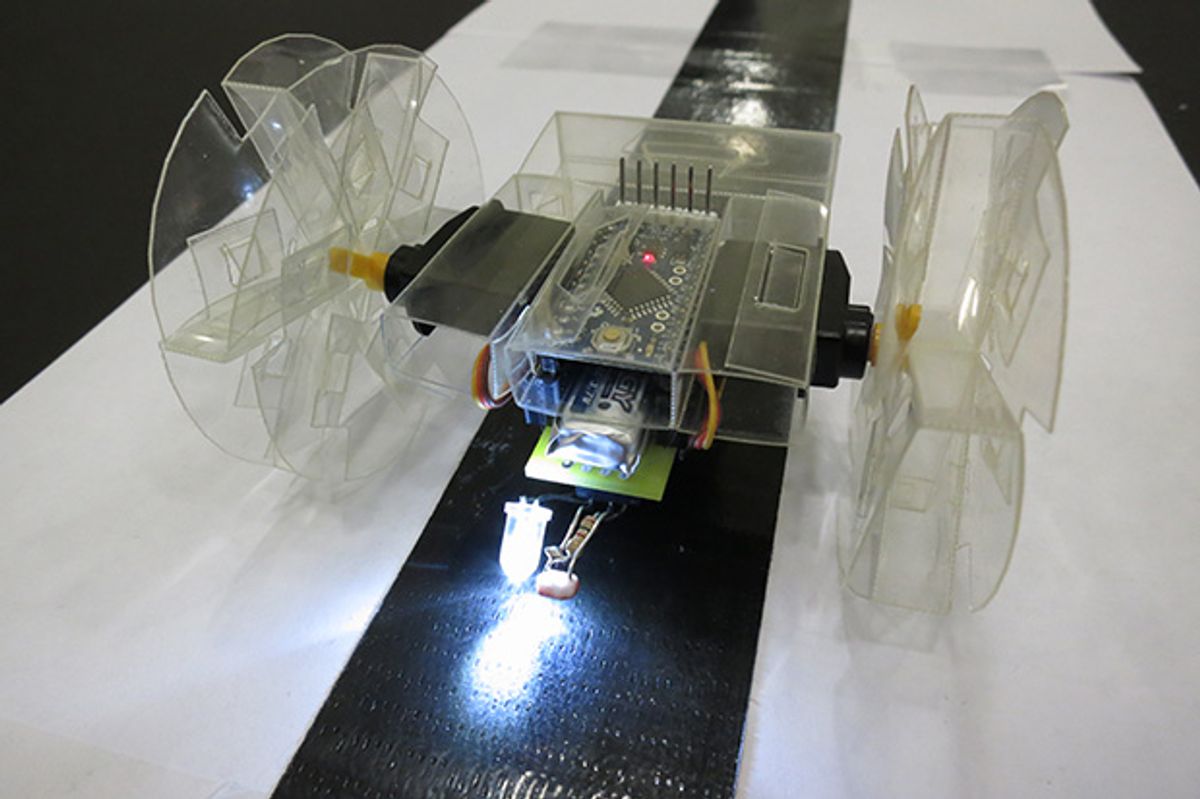Robots, as anyone who has ever attempted to build or buy or fix a robot knows, tend to be expensive. This presents a problem for people who want to start learning about robotics, because getting a foot in the door with an actual robot to work on generally involves a substantial up-front investment in hardware. And for places where teachers and students don't have huge piles of money to throw at technology, this can mean that robots just don't happen.
The African Robotics Network (AFRON) and IEEE Robotics and Automation Society (RAS) collectively sponsor a biennial design challenge to "collaboratively create an educational robot that is an order of magnitude less expensive than existing products, to inspire young people around the world." For 2013/2014, MIT took home a win with their MIT SEG robot, a 3D-printed, Arduino-based wheeled robot that can be built for $20 in five steps with no training or tools.
The completed MIT SEG is shown in the picture above; below is an image of the unassembled robot in its entirety:
All you have to do to go from this to robot is fold up the chassis (the squareish bits at the lower left), fold the wheels together, fit the electronics in, stick the wheels onto the servos, and that's it, you're done. Here's the bill of materials:
MIT points out that if you don't go with a breakout board for the Arduino and instead wire-wrap the headers directly, you can drop the cost by about $2.50 per bot. You also need a programmer and a charger, which together will run you another $18.20, but these can be shared among multiple robots.
So great, you've got a robot that's easy to make and is dirt cheap. What can it do? Out of the box, MIT SEG includes an Arduino compatible drag-and-drop graphical programming interface. The LED and photosensor can be used to determine whether the robot is looking at something black, white, or gray, meaning that you can do line-following and some obstacle avoidance right away, and MIT has put together a bunch of examples and an entire curriculum that classrooms can follow. Plus, since the robot has an Arduino for a brain, you can leverage all of the hardware (and the community) that's been plugging into Arduinos for the last few years.
Second place in the hardware portion of the Design Challenge went to Harvard's $10.70 AERobot:
The Ultra Affordable Educational Robot Project Design Challenge also includes categories for Software, Curriculum, and Community Challenges.
"The AFRON organizers and RAS sponsors admire the ingenuity of the submissions in all categories," said Ken Goldberg, a roboticist at UC Berkeley who co-founded AFRON with Ayorkor Korsah, a professor of computer science at Ashesi University, in Ghana. Goldberg noted that two winning projects from Africa, PanyaBot (Kenya) and ARX LollyBot (Ghana), continue to make major advances in the Software and Community Challenge categories. "We look forward to connecting all the participants to share ideas and designs for next steps via the AFRON network, which anyone worldwide can join at no cost," he said.
Check out all of the winners at the link below.
Evan Ackerman is a senior editor at IEEE Spectrum. Since 2007, he has written over 6,000 articles on robotics and technology. He has a degree in Martian geology and is excellent at playing bagpipes.





